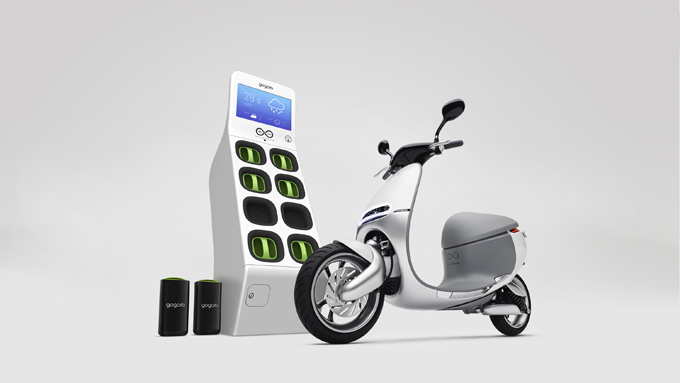
In 2011, Gogoro raised $50 million. Three years later, another $100 million. And yet, no one seems to have any idea what the heck Gogoro does.
Until now.
Having somehow managed to keep their plans almost entirely under wraps for the last three years, the company is unveiling their first product as CES this morning. We spoke to them a few weeks back.
Until today, here’s all anyone really knew about the company:
- It was working on something energy-related
- It had lots of HTC in its veins. A number of its engineers are from HTC; one of its co-founders, Horace Luke, was HTC’s Chief Innovation Officer from 2007 to 2011; a good chunk of the $150m they raised was contributed by HTC Chairwoman Cher Wang.
To simplify what the company pitches as a complex, many-year plan, Gogoro is making two things for now: an electric scooter they call Smartscooter, and a battery swapping infrastructure to power it.
The scooter and the battery network are two sides of the same coin, but the scooter seems like something of a stepping stone — a first move to begin laying the foundation for its battery swapping network, which the company clearly hopes will power many a gadget — vehicular or otherwise — moving forward.
The Battery And The GoStation Hubs
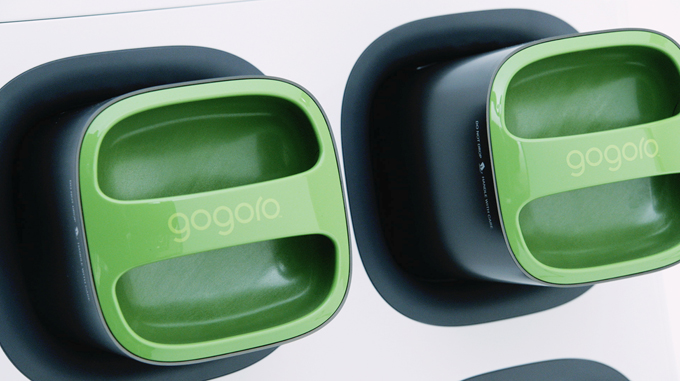
Battery Closeup
We’ll start here, as, though seemingly simple, the battery is core to the overarching concept.
Gogoro has built a new battery to power its scooter — and, potentially, other things moving forward. The company’s founders talk much of their battery’s ability to daisychain together to power anything, from leafblowers to full-size vehicles.
Built with Panasonic’s 18650 lithium-ion cells (the same used in the Tesla Model S) and a couple dozen sensors inside, each of Gogoro’s batteries comes in at about the size of a large shoebox and weighs roughly 20 pounds.
When it’s time for more juice, an app on your smartphone directs you toward the nearest “GoStation” hub. Each hub, standing about 6 feet tall and weatherproofed to its core, can hold and charge 8 batteries at a time. Hubs can be chained together, as pictured below.
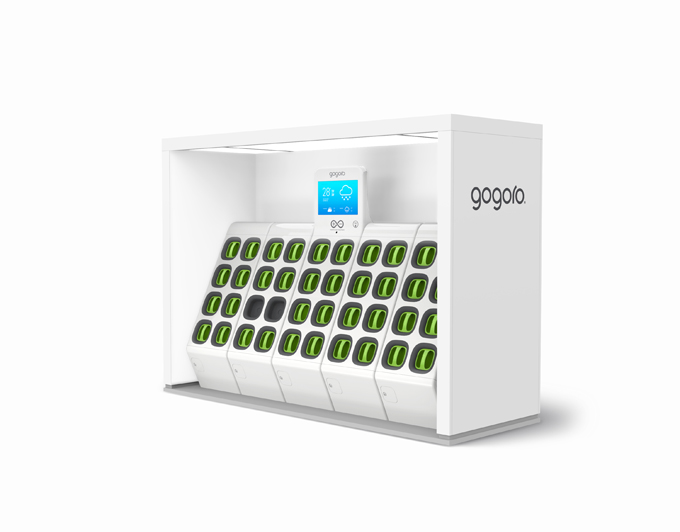
Walk up and slip your battery into an open slot; 6 seconds later, a fully-charged battery pops out of one of the other slots.
You’re able to reserve a battery before your arrival, ensuring that someone else doesn’t swoop your cell while you’re en route.
It’s important to note that unlike, say, Tesla, Gogoro customers never really “own” their battery. You can’t charge this thing at home.
Instead, customers are renting the battery by subscription, which gives you access to the swapping network — but at least as of a few weeks ago when I spoke with the company’s founders, they still weren’t quite sure what it would all cost.
Distribution and concentration of these GoStation hubs will be key to Gogoro’s success — no one wants an electric vehicle they can’t drive. They’re hoping to have these things available city-wide in metropolitan areas, with their density scaling relative to the city’s population. Their focus, at first, is on places like gas stations — but they note that the hubs can be installed anywhere with a 220v outlet.
“We can show up with one truck and have it packed with enough hubs to cover a college campus or small city,” co-founder Horace Luke tells me.
Like the subscription model on the battery, it seemed that the perks for a business owner looking to have a hub installed weren’t quite set in stone.
The Smartscooter
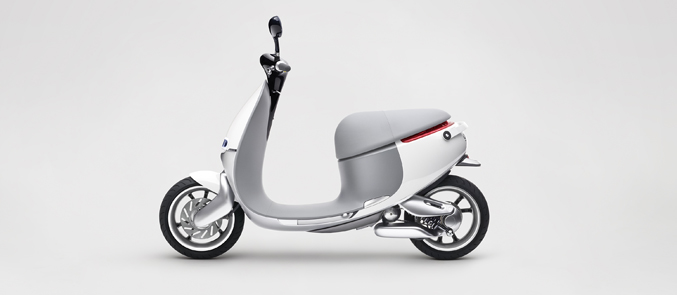
Gogoro built this thing from the ground up, from the motor to the frame.
It goes from 0-30 in 4.2 seconds, with a max speed of roughly 60mph. With both of the scooter’s two battery slots filled, it has a maximum range approaching 100 miles. It’s a city-rider, not a roadtrip horse.
As you might expect of a team with so much smartphone blood, it’s pretty smart.
It’s connected to the cloud via cellular connection, with 30 onboard diagnostic sensors keeping track of pretty much anything that might go wrong. If something breaks or needs maintenance, you’ll hear about it the next time you open the app — or, failing that, from the hub’s display next time you swap your battery.
Meanwhile, the onboard sensors are also gauging the way you ride — both so that the scooter can constantly tweak its own power management to optimize for your riding style, and to offer up tips on how to get better mileage. If you tend to open the throttle too much when going uphill and are just wasting juice, the scooter will tell you.
A BluetoothLE keyfob locks and unlocks your scooter, opens your underseat storage, and identifies you at the GoStation hub.
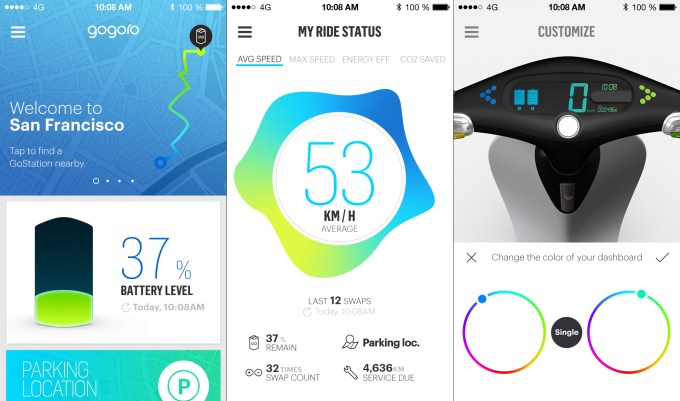
Want to tweak the color of your dashboard? Just hop into the app and slide a dialer. Want to change the pattern of lights that blink when you lock/unlock the scooter with the fob? Again, it’s right in the app.
But how much will the scooter cost? Like many other details involving money, the company is still working that out.
It’s something of a challenge to write about a company like this, as so much hinges on what can’t be seen at launch. Does the market want an electric scooter they can’t charge at home? Will Gogoro’s battery eventually find many uses beyond just the scooter, as the company clearly hopes it will? Will they be able to roll out their charging network to a density that makes the whole thing worthwhile?
For today, I’ll keep my comments limited to what I can see — and that’s a damned nifty scooter, with an interesting battery system and a beautiful smartphone app to go with it. The scooter is quite a sight to see — as much as a scooter can be “pretty”, it’s really quite pretty.
[gallery ids="1100462,1100463,1100464,1100465"]